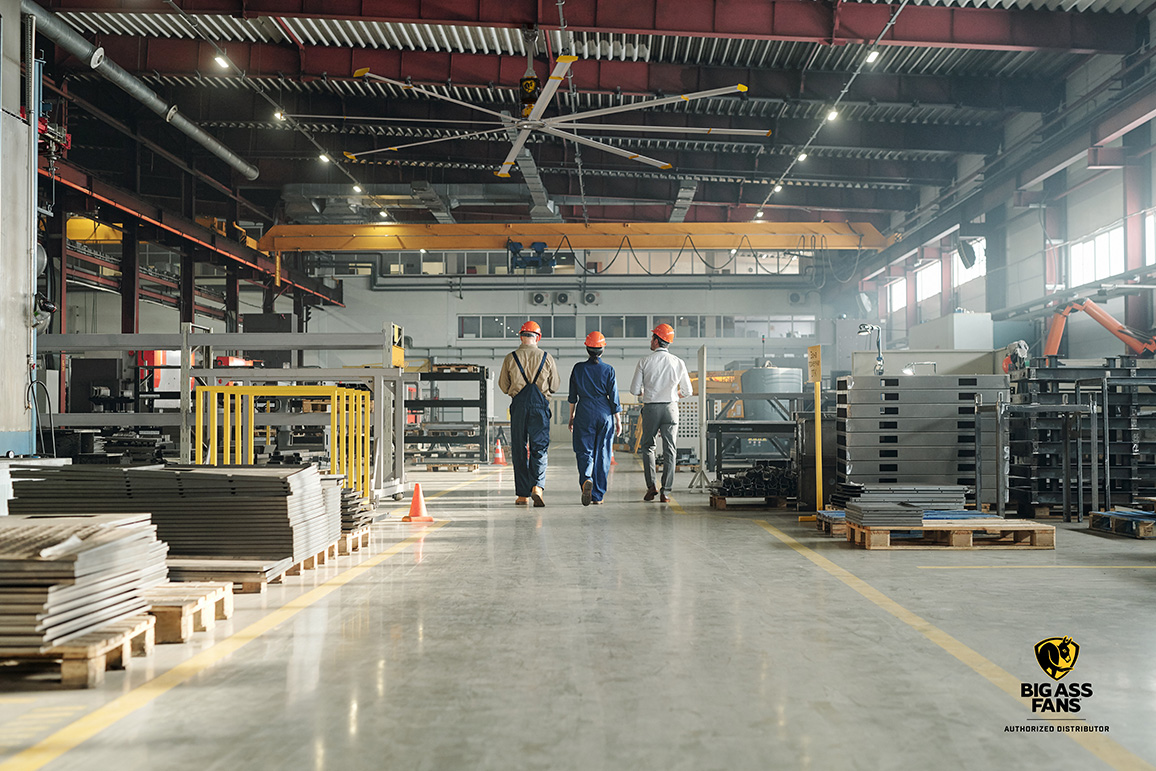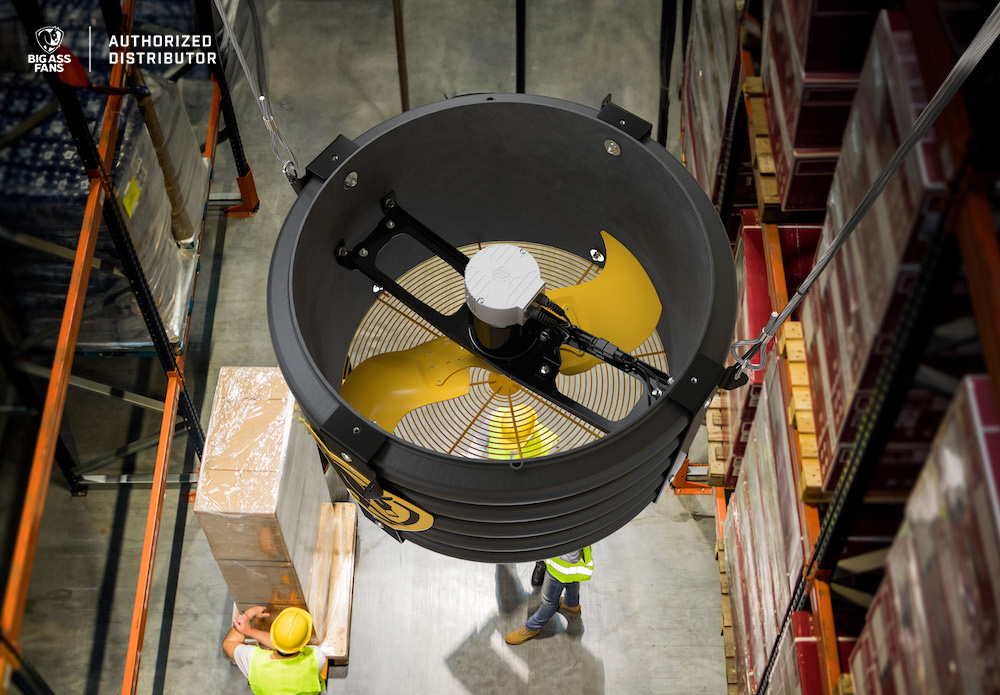Warehouse Fans - Are they worth the investment?
During the middle ages, there was a popular theory among scientists and physicians that contagious disease was caused by a noxious form of ‘bad air’, called the Miasma Theory. While the ‘Miasma theory’ was largely abandoned in 1880, recent evidence suggests there may be some semblance of truth in the idea that ‘bad air’ is bad for you!
A High Volume Low Speed (HVLS) fan’s primary purpose is to move air – thereby increasing airflow, ventilation and ultimately improving air quality and safeguarding employee health (getting rid of that ‘bad’ air so to speak).
Suppliers of HVLS fans have also long claimed that they are inexpensive to operate (compared to more traditional methods of heating and cooling), reduce condensation and regulate temperatures through destratification.
There have been several studies to support these claims, but today we will focus on those relating to warehouse fans improving employee working environments and health.
Safeguarding Employee Health
In January 2022 an international team of scientists, engineers, and researchers, in collaboration with the Air Movement and Control Association International (AMCA International) executed a series of numerical simulations to investigate the impact of large-diameter ceiling fans (LDCF) on COVID-19 exposures in warehouses. This was in part to review confusing advice received from the CDC, and other organisations.
Here are some the conclusions from that study:
- At high fan speeds (e.g. summer conditions) the simulations show a notable reduction in COVID-19 concentrations.
- At low fan speeds (e.g., winter conditions) the simulations show a slight reduction in COVID-19 concentration in the region close to the fan (e.g., within three fan diameters).
- Thermal plume are quite essential especially for still air cases; local air mixing and movement could help to dilute and reduce the chance of creating local hotspots
Following the study, the AMCA issued an AMCA COVID-19 Guidance for LDCF, and the CDC’s current recommendations, dated June 2021, acknowledge that using fans indoors can improve air circulation and dilute viral particle concentrations.
Regulating Temperature
The Center for the Built Environment, UC Berkeley conducted a study in January 2019 on Ceiling Fans in Commercial Buildings, where they interviewed 2 architects, 8 engineers, and 3 facilities managers focused on 20 operational commercial building projects that incorporated ceiling fans, and also took a total of 65 in situ airspeed measurements across five sites.
Interviewees’ feedback about the fans was generally positive once installed. “Occupants often choose to have the ceiling fans on even when the resulting airspeeds are too slow to create an appreciable cooling effect. This aligns with findings from the interviews, that ceiling fans provide benefits not only for comfort conditioning and energy use reduction, but also provide individual control, non-thermal benefits (such as perceived and measurable air quality), or an aesthetic choice not only in their own right, but sometimes as a way to eliminate visible ductwork.”
Conclusion
It is not just ‘lip service’ - HVLS warehouse fans really do work to improve air quality, safeguard your employee’s health and help with temperature regulation. And a happy side effect of these benefits is increased productivity. You can see our success in Foodstuffs Case Study. Check out our warehouse fans industry page for more information on which fan could suit your warehouse best, and more applications.
Sign up to our newsletter




